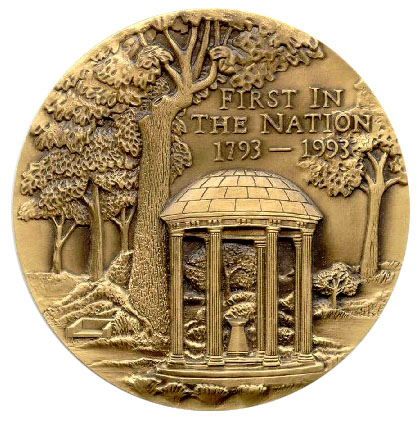The accompanying image depicts “Sir Archy” (Sir Archie being the preferred spelling), a champion racer generally recognized by sport historians as a “foundation sire of the American turf.” Foaled in Virginia in 1805, Sir Archie was purchased by William Ransom Johnson in 1808 and moved to Warrenton, N.C., for training. Sir Archie had several other Tar Heel owners. Former North Carolina Governor William R. Davie paid $5,000, an immense sum of money at the time, to add the stallion to his stables at Halifax in 1809. Later, William Amis, the owner of Mowfield Plantation in Northampton County, bought Sir Archie. It is there where the great horse died in 1833, having spent twenty-five of his twenty-eight years in North Carolina.
A prolific stud in retirement, Sir Archie sired many offspring and linked his bloodline to an array of later champions, including Lexington, Fair Play, Man O’War, Display, Native Dancer, and Secretariat. In addition, the current Triple Crown contender, Big Brown, is a descendent. The best reference for learning more about this legendary horse and about North Carolina’s early racing history is The Life and Times of Sir Archie written by Elizabeth Amis Cameron Blanchard and Manly Wade Wellman (Chapel Hill: UNC Press, 1958).



